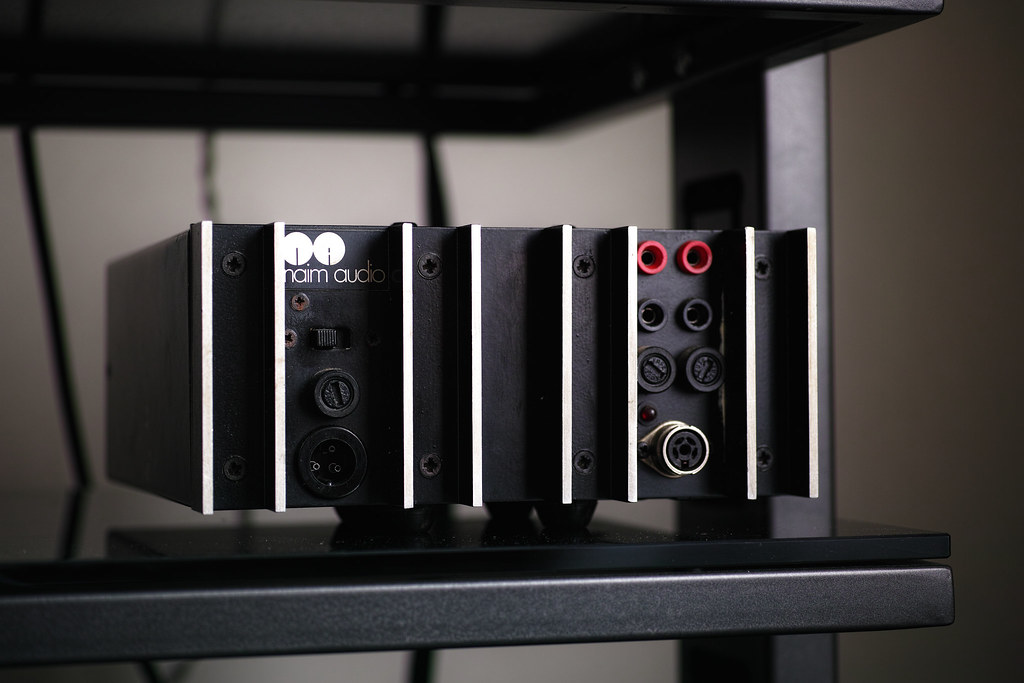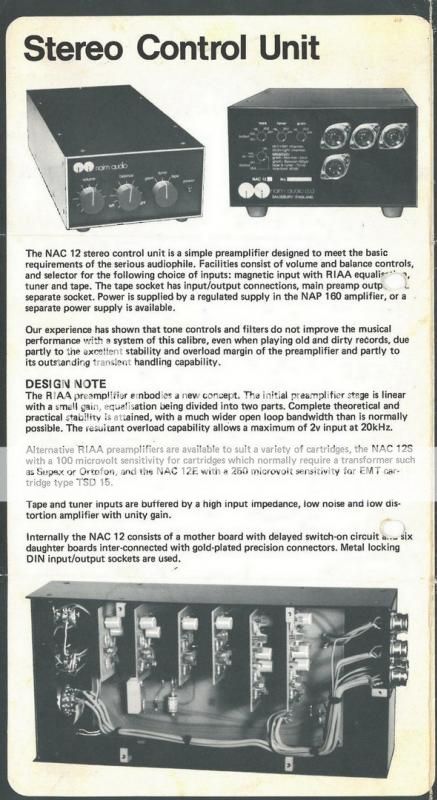Hi Guys;
I have seen versions of the NAC12 for use with a SNAPS (2x24V split rail) and NAP250 as a factory supplied option. From what I can gather, this version was the last generation of the NAC12 that had the latest main board where the output-muting relay was moved to a separate plug in card. The track layout on this PCB would easily accommodate the splitting of the 24V track on the main board. Im not sure how easy it would be to split the 24V tracks into two separate feeds on the earlier version main boards or how you would actually divide up the feed. I understand that the 4 main boards (
2 input buffers and 2 output boards) got one supply and the 2 phono boards shared the other 24V supply with the output muting board. Simply splitting the 24V feed into Left and Right channel is not how naim did it and besides, to do that properly would require a third 24V feed for the output muting circuit.
Before you decide to modify your NAC12 to split rail operation you need to consider how you will ultimately use your NAC12. If you are only ever going to using it with a power-amp that has a 24V feed then you may be better off leaving it as a single rail. In Particular, the NAP160 (
bolt together case version) has its own 24V winding on the mains transformer. This to me suggests an operating condition that is the most optimum as you keep all your earths at one location and the signal passes though one cable and only one set of plugs, the 24V feed also gets its own transformer winding rather than scavenge from one of the main amp rails.
I would think carefully and consider how you ultimately wish to use the NAC12 before undertaking any major modification. Unlike the 32.5, 72 and the 62 which could be used either way with a bridging plug and were fitted with both 4 and 5 pin sockets that allowed either single or split rail operation, a NAC12 is either single or split rail operation. You become locked into one configuration or the other unless you drill into the casework to fit a second socket (
and make up a special bridging plug) or by making up you own special 5 pin to 4 pin interconnecting lead for the times you want to run from a single 24V feed and 4 pin power-amp socket. This latter option sounds the most elegant to me as you are not unnecessarily diverging from the original NAC12 appearance or configuration. If you do convert the NAC12 to split rail make sure you use a 240 degree 5 pin socket rather than a standard 180 degree 5 pin socket for the 2x24V pre-out socket and make sure you observe the standard naim pin configuration. The last thing you want to do is push 24V DC back into another source component then wonder why it wont work any more.
Look forward to seeing lots of pictures of the finished project.

LPSpinner.





